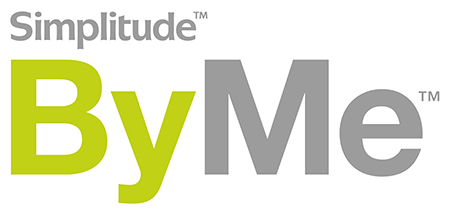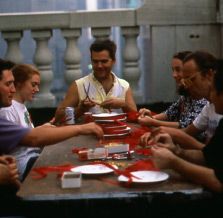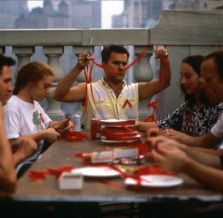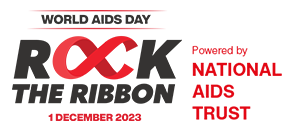We send out a pack of 100 fabric red ribbons FREE to anybody fundraising for National AIDS Trust in the UK. We can also send ready-made activities materials to help with both in-person and online fundraising.
The fundraising team will also be happy to discuss your fundraising plans and offer additional support and materials where possible. You can contact them at fundraising@nat.org.uk.
You can order a free pack of 100 fabric ribbons and/or a ready-made activities pack here.
To place your order, you must confirm that you plan to fundraise for National AIDS Trust with the materials, and that you will pledge to raise a minimum of £15 to cover costs.
National AIDS Trust have also produced a range of exclusive red ribbon brooches. You can purchase one by visiting our shop.
Where can I get a red ribbon?
If you are planning to fundraise for National AIDS Trust, you can order a pack of 100 fabric red ribbons from us free of charge. Simply fill out this order form.
You can buy fabric ribbons (individually or in packs) and red ribbon brooches from the National AIDS Trust shop.
From 1 November until 5 December 2022, when you order an OraQuick HIV Self Test, BioSure will send you a free red ribbon and donate £1 from every sale to National AIDS Trust.

From 1 November until 5 December 2022, when you order a Simplitude ByMe HIV Self-Test, Simplitude ByMe will send you a free red ribbon and donate £1 from every sale to National AIDS Trust.

Where did the idea come from?
In 1991, a decade after the emergence of HIV, twelve artists gathered in a gallery in New York’s East Village. They had met to discuss a new project for Visual AIDS, a New York HIV-awareness arts organisation.
It was there that they came up with what would become one of the most recognised symbols of the decade: the red ribbon, worn to signify awareness and support for people living with HIV.
At the time, HIV was highly stigmatised, and the suffering of communities living with HIV remained largely hidden. The artists wanted to create a visual expression of compassion for people living with HIV.
They took inspiration from the yellow ribbons tied on trees to show support for the US military fighting in the Gulf War. Additionally, they decided that the elegant loop of the ribbon shape was easy to make and replicate. They avoided traditional colours associated with the gay community, such as pink and rainbow stripes, because they wanted to convey that HIV was relevant to everyone. They chose red for its boldness, and for its symbolic associations with passion, the heart and love.




Photos courtesy of The Elizabeth Taylor Archive
How did the red ribbon become so well known?
In the early days, the artists made the ribbons themselves and distributed them around New York art galleries and theatres. Initially, they included some text to explain the ribbon’s significance, but as the ribbon became more famous, this was no longer needed.
Within weeks, the red ribbon could be seen in such high-profile places as the red carpet of the Oscars. The media took notice and, within a short space of time, the symbol became universally recognised. At the Freddie Mercury Tribute Concert, held at London’s Wembley Stadium on Easter Sunday, 1992, more than 100,000 red ribbons were distributed among the audience, with performers such as George Michael wearing one.
The red ribbon continues to be a powerful force in the efforts to increase public awareness of HIV. It has inspired other charities to utilise the symbol, such as the pink breast cancer awareness ribbon.


